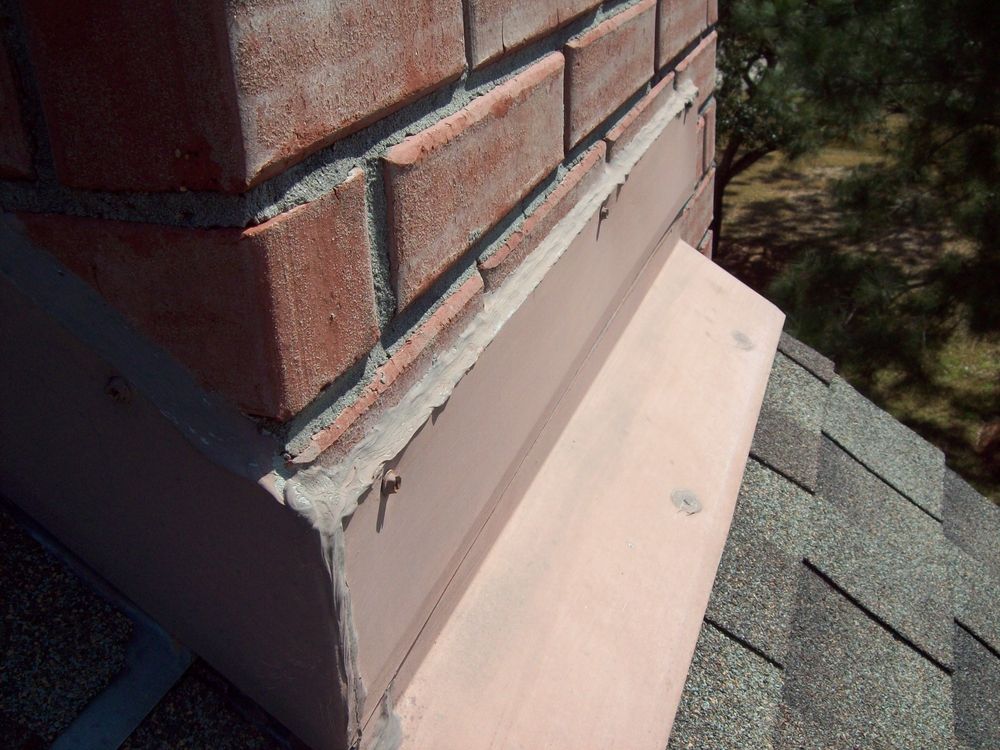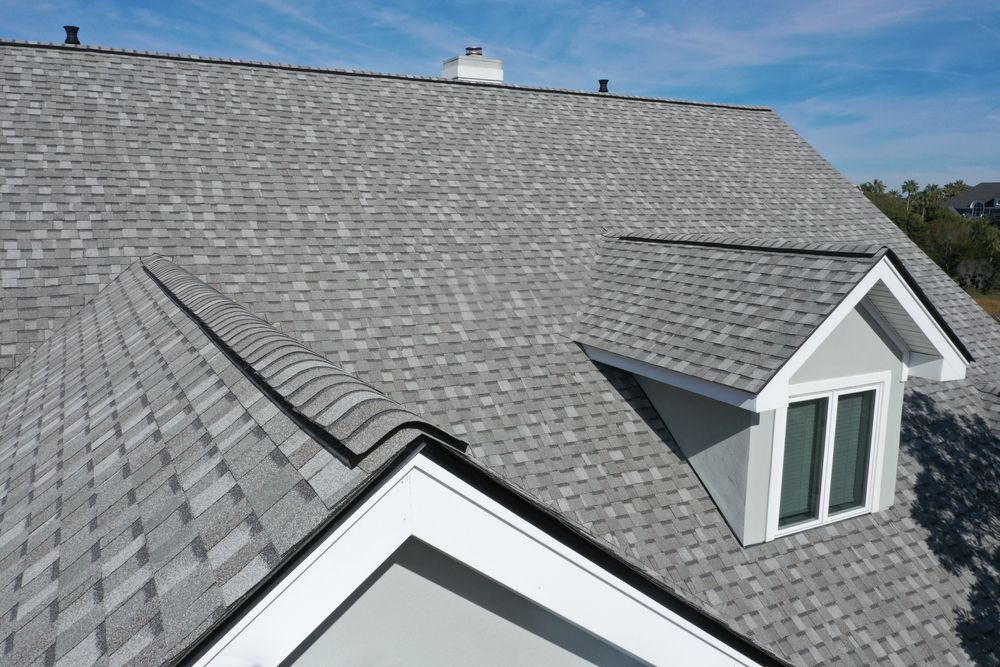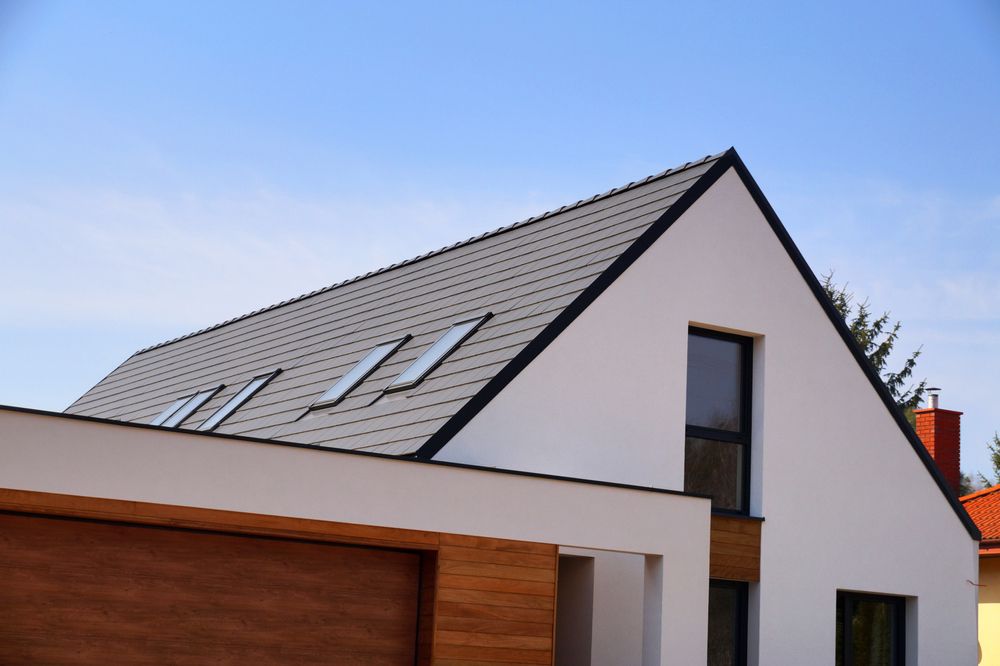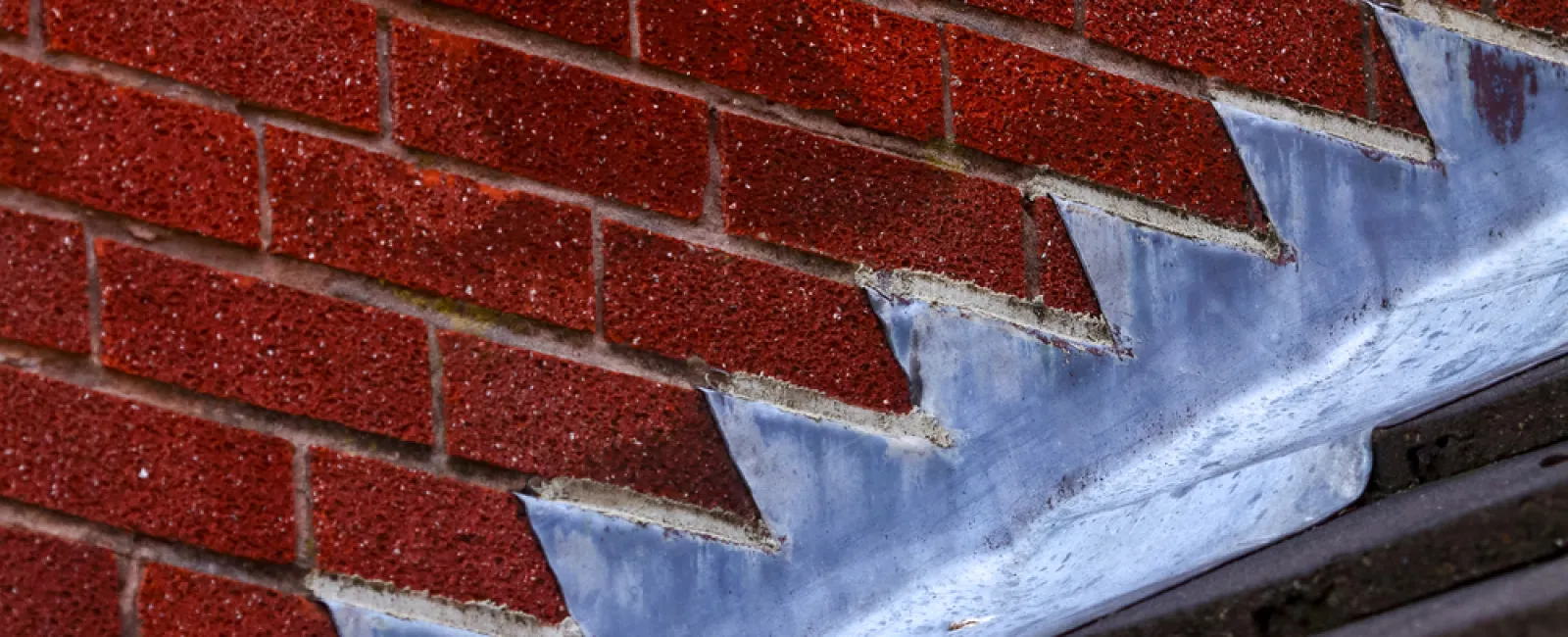Roof flashing is a thin, corrosion-resistant sheet of metal that is bent into shape to fit into a joint. On shingle roofs, it's installed between the underlayment and the shingles. On metal roofs, it's usually installed on top of the panels.
The purpose of roof flashing is to prevent water leaks and any mold, mildew, rot, or pest infestations.
Schedule a Free Roof Inspection

What Is Roof Flashing and Why Do I Need It?
Roof flashing directs water away from seams and crevices between sheathing where it can seep through into your home. The most vulnerable areas of your roof are where the roof's surface ends or is met by a different surface, such as:
Dormers
Chimneys
Vertical walls
Parapets
Cupolas
Vents
Skylights
Roof edges
Roof valleys
Different Types of Roof Flashing
Roof flashing comes in several types to suit different needs. Step flashing and continuous flashing are most often used around protrusions from the roof like chimneys and dormers, for example.
1. Apron or Continuous Flashing
Shaped like an L, apron flashing is used at the base of a wall or penetration. It can be up to 14 feet long to fit the base of the penetration.
2. Step Flashing
Step flashing is mainly used against the sides of walls and chimneys. A piece of metal flashing is placed under every shingle installed against the side of a wall to stop water from running down into it. As indicated by its name, step flashing is installed as each shingle is installed.
3. Base and Counter Flashing
Similar to step flashing, counter flashing is used on walls and chimneys. But counter flashing is sawed into an existing mortar joint. Unlike counter flashing, the metal comes up over the top of the brick.
Base and counter flashing are used together to protect leak-prone roof protrusions like chimneys. The base flashing is a continuous L-shaped piece that attaches to the roof, but its upper edge is not attached to the roof penetration. The counter flashing piece is attached to the penetration but not to the roof, so the pieces of flashing overlap but are not secured to each other. This system of base and counter flashing allows for expansion and contraction without damage, which is especially important in areas that are difficult to waterproof, like chimneys.
Roof flashing that you can see is usually considered counter flashing.
4. Drip Edge Flashing
Flashing is installed at the edge of the roof to stop water from running down the fascia boards and into the soffits. The simplest type of flashing is an L-shape, but there is also T-shaped and F-shaped drip edge flashing.
5. Valley Flashing

Roof valleys are prone to leaks because of the amount of water that flows through them. Roof valley flashing creates a V-shaped channel for water that runs into the areas where two roof slopes meet. Valley flashing can be hidden under shingles or left exposed in open valleys. Open valleys happen with certain roofing materials that cannot bend to "close" the valley.
Valley flashing can be one piece of continuous flashing or several overlapping pieces, like step flashing.
6. Pipe Flashing
Pipe flashing looks like a one-piece collar that fits around the diameter of a pipe. Unlike other roof flashing types, it can be made of rubber or silicone instead of metal for easier expansion and contraction.
7. Wall Flashing
The area where the roof meets an exterior wall is usually lined or covered with wall flashing for extra waterproofing.
What Are Flashing Materials Made Of?
Aluminum: Cheap, readily available, and easy to install, aluminum is a highly common flashing material. It's available in many colors to match any roofing material or siding color.
Lead-coated copper: Lead-coated copper is a long-used type of roof flashing. It has a lustrous, gray look.
Copper: Copper is a traditional flashing material. It's malleable and attractive, and many people like the look of the patina it gains over time. It can be expensive, especially pure copper.
Galvanized steel: Galvanized steel is cheap and functional but susceptible to discoloration.

Do You Have To Replace Your Roof Flashing When You Replace Your Roof?
If you're getting a roof replacement, you should have the roof flashing replaced as well. Old flashing will not last the lifespan of your new roof, and it's better to have it replaced now rather than later when it starts to fail and cause water damage.
If you have a newer roof and you're getting a repair, you may be able to keep your existing flashing. To reuse flashing, your roofer will need to remove it carefully to avoid damaging it and then inspect it.
Some types of flashing, like step flashing, are difficult to reuse because it's likely to be dented or damaged when separating from the old shingles.
New flashing should not be layered on top of the old flashing. You should only have one layer of flashing on a roof at a time.
What Else Is There On a Roof Besides Flashing?
The first layer of a roof is the decking, the wooden boards that create the framing of your roof. The next layer is the underlayment, a felt or synthetic material that helps protect the decking from water damage. Before shingles are laid, a drip edge—a type of metal flashing—must be installed to prevent water from flowing into your roofing components.
Ice and water shields (waterproof membranes) should also be installed at roof valleys and near penetrations like chimneys.
At roof peaks where two slopes of the roof meet, ridge capping should be installed. Ridge capping is thicker than regular shingles and pre-bent so it can form to the ridges on your roof.
Contact Northpoint Roofing for Roof Flashing Inspection & Repair Services
For expert roofing services in Tennessee or Georgia, turn to Northpoint Roofing. We are a full-service roofing contractor, offering repairs and replacements for commercial and residential properties. We work with a variety of materials, including shingles, metal roofing, and tile roofing.
Whether your roof has been damaged by a storm, you have a roof leak, you need a new roof, or you suspect damage, we can provide the solution with comprehensive inspections, roof leak repair, roof flashing repair, and many more services.
Schedule a free inspection today to identify any damage and ensure your roof is in tip-top condition.

